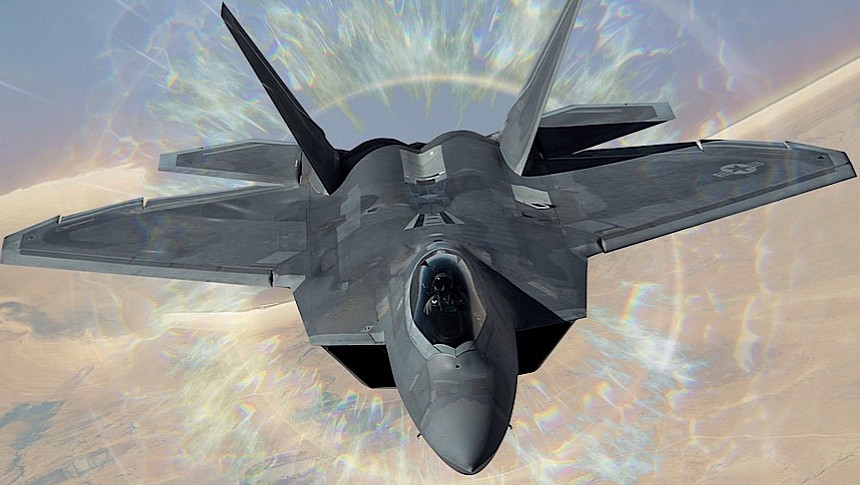As made painfully clear by the war raging over in Ukraine, military technologies are advancing at such a rapid pace that it becomes difficult for tested and proven systems and hardware to remain relevant. Just look, for instance, at how tanks have become the easiest prey on the front for drones and all sorts of advanced anti-tank guided missiles (ATGM).
Out of fear of the many air defense systems deployed in the area, some of them extremely advanced, most of the military planes operated by both Russia and Ukraine have remained on the ground, or at best they fire their arsenal from considerable distances from the front.
It's not exactly clear yet how Western-made aircraft would perform in such an environment, but as soon as F-16 deliveries to Ukraine get underway, we'll get an answer to that question as well.
What we won't get an answer to is how well one of America's most advanced aircraft, the F-22 Raptor, would handle itself. Despite being around for almost three decades, the plane is still mocked by many as being the most advanced fighter in the world to never shoot down an enemy aircraft.
The reasons for that have nothing to do with its capabilities, of course, and should be viewed as a result of America's efforts of not getting the prized hardware in any meaningful conflict, by simply avoiding large-scale battles against near-peer adversaries.
That may change, of course, and the U.S. needs to maintain the 183-strong fleet of F-22s ready for anything. That's done through constant upgrades where upgrades are needed, and careful handling of everything else.
As it is today the no-longer-made F-22 is powered by a pair of Pratt & Whitney turbofan engines capable of developing 35,000 pounds of thrust each. They can push the aircraft to a top speed of Mach 2 (1,535 mph/2,470 kph) and to an altitude of 50,000 feet (15,000 meters).
One of the technologies that make the F-22 an advanced fighter jet is its electronic warfare (EW) complex. It's called AN/ALR-94 EW, it is made by BAE Systems, and it was deployed from the get-go on the machine.
AN/ALR-94 EW is a set of digital tools that integrates radar, targeting support, and countermeasures into a single system. It's meant to help F-22 pilots "detect and defeat surface and airborne threats" from a large enough distance to keep the plane undetected by enemy radar.
The U.S. Air Force and the plane's maker, Lockheed Martin, seem so confident that the AN/ALR-94 EW will still be relevant five years from now that it awarded BAE Systems a five-year contract to keep the system up and running in F-22s through repairs and upgrades. The value of the contract was not disclosed, but it is clearly meant to keep the military plane at the front of the pack in terms of advanced tech.
It's not exactly clear yet how Western-made aircraft would perform in such an environment, but as soon as F-16 deliveries to Ukraine get underway, we'll get an answer to that question as well.
What we won't get an answer to is how well one of America's most advanced aircraft, the F-22 Raptor, would handle itself. Despite being around for almost three decades, the plane is still mocked by many as being the most advanced fighter in the world to never shoot down an enemy aircraft.
The reasons for that have nothing to do with its capabilities, of course, and should be viewed as a result of America's efforts of not getting the prized hardware in any meaningful conflict, by simply avoiding large-scale battles against near-peer adversaries.
That may change, of course, and the U.S. needs to maintain the 183-strong fleet of F-22s ready for anything. That's done through constant upgrades where upgrades are needed, and careful handling of everything else.
As it is today the no-longer-made F-22 is powered by a pair of Pratt & Whitney turbofan engines capable of developing 35,000 pounds of thrust each. They can push the aircraft to a top speed of Mach 2 (1,535 mph/2,470 kph) and to an altitude of 50,000 feet (15,000 meters).
One of the technologies that make the F-22 an advanced fighter jet is its electronic warfare (EW) complex. It's called AN/ALR-94 EW, it is made by BAE Systems, and it was deployed from the get-go on the machine.
AN/ALR-94 EW is a set of digital tools that integrates radar, targeting support, and countermeasures into a single system. It's meant to help F-22 pilots "detect and defeat surface and airborne threats" from a large enough distance to keep the plane undetected by enemy radar.
The U.S. Air Force and the plane's maker, Lockheed Martin, seem so confident that the AN/ALR-94 EW will still be relevant five years from now that it awarded BAE Systems a five-year contract to keep the system up and running in F-22s through repairs and upgrades. The value of the contract was not disclosed, but it is clearly meant to keep the military plane at the front of the pack in terms of advanced tech.


















